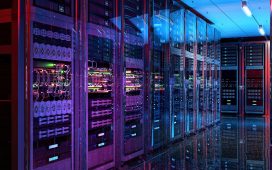Linus Torvalds has, as foreshadowed, released version 6.2 of the Linux Kernel.
“So here we are, right on (the extended) schedule, with 6.2 out,” Torvalds posted to the Linux Kernel mailing list on Sunday.
It’s not a sexy LTS release like 6.1, but regular kernels want some test love too
A few small fixes emerged over the previous week’s work on the kernel, but Torvalds wrote “I wasn’t going to apply any last-minute patches that weren’t actively pushed by maintainers, so they will have to show up for stable.
“Nothing seemed even remotely worth trying to delay things for.”
Torvalds urged developers and users to test the new cut of the kernel.
“Maybe it’s not a sexy LTS release like 6.1 ended up being, but all those regular pedestrian kernels want some test love too.”
Torvalds’s assessment of version 6.2 might not be shared by Intel, since its Arc GPUs have been promoted to the stable channel. Chipzilla was late to market with standalone GPUs and has a lot of catching up to do: now that the tin is supported in the Linux Kernel, Intel can at least bid for a whole lotta workloads it could not credibly compete for last week. Intel will also be happy that its software-defined silicon code – aka “Intel On Demand” – was promoted. It means users can choose how much of the compute power available in certain Xeon CPUs to employ – and pay Intel to put more of it to work.
Mainline support has arrived for Apple’s M1 CPUs, meaning the likes of Asahi Linux should have an easier time of things. The Register imagines some penguinistas may now turn their attention to M1-powered iPads.
Torvalds thanked developers for swiftly moving on to work for version 6.3 of the kernel.
“I already have 30+ pull requests queued up, which I really appreciate. I like how people have started to take the whole ‘ready for the merge window’ to heart,” he wrote.
Among the updates coming to Linux 6.3 are ethernet driver support for Nvidia BlueField 3 DPUs – an important enabler for the accelerators. Support for Qualcomm’s Snapdragon 8 Gen 2 is also on track for inclusion.
And if you needed a reminder that Linux powers all sorts of devices, another inclusion for 6.3 addresses improved support for analog TVs and the 525- or 625-line displays that the NSTC and PAL standards define. ®










